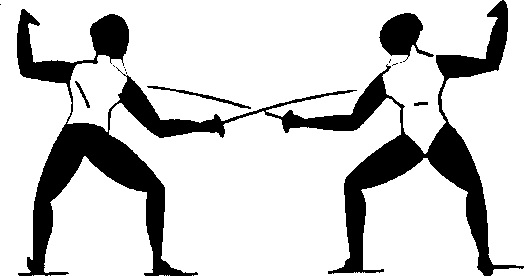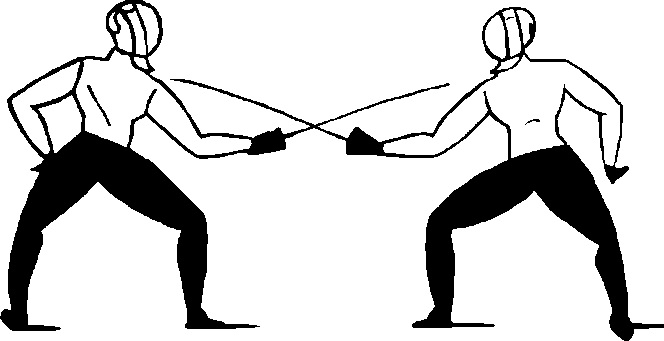Fencing as a modern sport
History of fencing
Fencing as a sport evolved around the end of the Victorian era and an international organisation to oversee it was formed, the Federation Internationale d'Escrime (FIE). Originally everything was in French, but now English and Spanish are also included as official languages.
Most of the terms used in fencing are taken from French, with a few also from Italian.
The rules were adopted for use in the Olympic Games in Paris in 1914 and have been updated periodically since.
Rules for Foil were first formalised in 1914, while rules for Epee evolved from around 1892. The Sabre rules of 1914 took elements from the rules used in the London Olympics of 1908 and Stockholm in 1912, as well as Hungarian and other influences.
Electric scoring was introduced for Epee in 1936, Foil in 1957 and Sabre in 1988.
Since electric scoring was introduced as the new thing, in Britain the term steam has been used to refer to traditional, non-electric fencing.
The FIE website is here and the current international rules are here. British Fencing maintains the national rules, with a few changes relating to fencing in the UK.
Types of fencing



There are 3 types of weapon in modern fencing. They are still called weapons, but are really just sporting equipment.
In English, the weapons are called Epee, Foil and Sabre.
There are differences in the valid targets and scoring for each weapon, as outlined below.
Foil

The valid foil target is basically just the body, excluding the arms, legs and head.
Hits are scored with the point only, using a stabbing or thrusting action, Cutting or slashing is not allowed.
Epee

The valid epee target is the whole body, from the tips of the toes to the top of the head.
Hits are scored with the point only, using a stabbing or thrusting action, Cutting or slashing is not allowed.
Sabre

The valid target at sabre is everything above the waist, so including the arms and head, but excluding the legs.
Hits can be scored with either the point or the edge. In the old days, before electric scoring, cutting hits had to look real, but now it is only necessary make the light show.
Images courtesy of the FIE.
The piste
Fencing takes place on a piste, which Americans call a strip.
All pistes are currently 14m long, although historically epee pistes have been 18m long and sabre pistes have been up to 24m.
Pistes have varied from 1 to 2m wide, but are now standardised at 1.5m
Fencers are allowed to move backwards and forwards along the piste, but are not allowed to turn their backs on their opponents.
The piste can be made of metal, or other conductive material, to prevent the scoring system from registering hits made on the floor.

Competitions
Competitions at Olympic and World level are under the control of the FIE. Below that are european and national level competitions, and within the national structure there are regional and county competitions.
Competitions can also be organised by age group; the age groups depending on the organisation. There are various age groups for children, under 20 and under 23, as well as for veterans from the age of 40.
British Fencing (BF) maintains a National Ranking for British fencers, including for younger age groups, but not for veterans.
Most competitions will start with 1 or 2 rounds of poules, which is like the group stage at football, where everyone fences everyone else in the poule.
When the poules are finished, a ranking list is drawn up from the results of the poules, with the highest scoring fencer at the top.
It then moves to the Direct Elimination (DE) stage, the equivalent of the knockout stage in football. From here it is winner stays in and loser goes home, all the way to the final.
Each bout (fight/match) is controlled by a referee, who may issue yellow, red and black cards if necessary.
